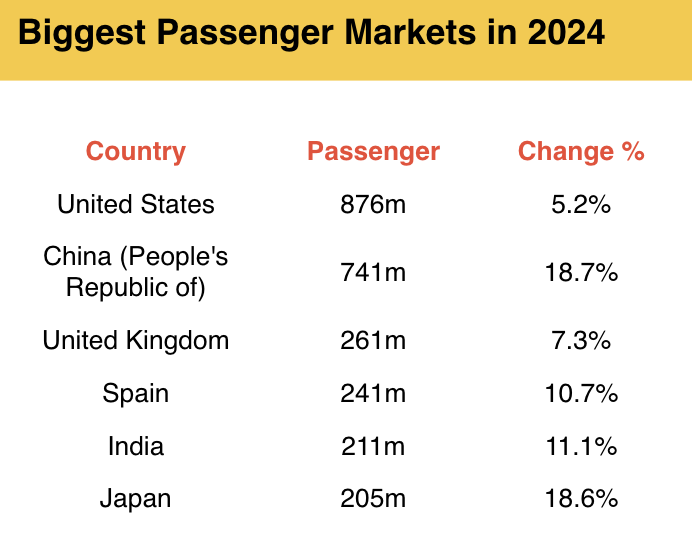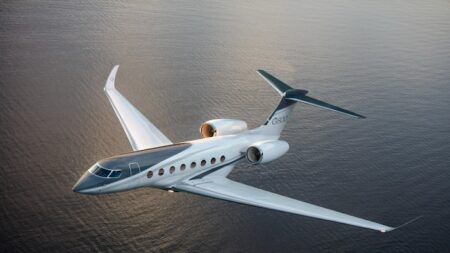The International Air Transport Association (IATA) has released the latest edition of its World Air Transport Statistics (WATS) report, which draws from statistical data gathered in 2024.
A key finding from the report is that international premium class travel – business and first class fares – grew by 11.8% in 2024, outpacing the 11.5% growth in global economy-class travel. The total number of international premium-class travellers in 2024 was 116.9 million (6% of total international passengers).
Leading the world regions in terms of percentage growth was Asia Pacific, with a year-on-year growth of 22.8%, driven by 21 million premium-class passengers. The report notes that premium growth in Asia Pacific was outpaced by the growth in economy-class passenger numbers – up 28.6%, to 500.8 million passengers.
Growth in premium-class travel exceeded that of economy-class travel in Europe, Latin America, Middle East and North America. Europe remained the largest market for international premium travel, with 39.3 million premium passengers, while the proportion of premium-class travellers as a percentage of all travellers was highest in the Middle East, at 14.7%.
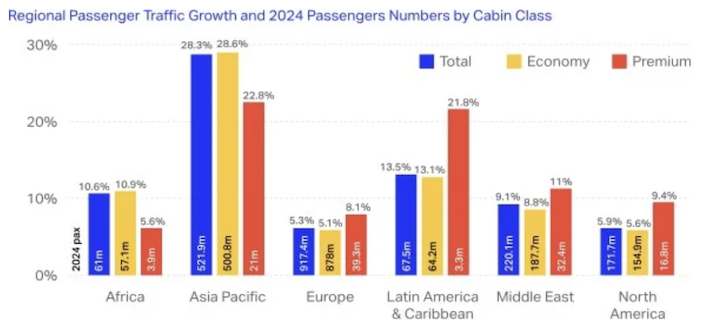
The WATS database is updated annually using data derived from more than 240 international airlines, to provide an overview of airline metrics related to demand, supply, and performance.
Top-performing airport pairs
Asia Pacific dominated the ranking for the world’s busiest airport pairs, with Jeju-Seoul (CJU-GMP) in South Korea being the most popular route globally, with 13.2 million passengers flying between the two airports in 2024. In the top 10, only one airport pair – Jeddah-Riyadh (JED-RUH) in Saudi Arabia – was not in the Asia Pacific region.
Bogota-Medellin (BOG-MDE) in Columbia was the busiest route in Latin America, with 3.8 million passengers, while Cape Town-Johannesburg (JNB-CPT) in South Africa was Africa’s busiest route, with 3.3 million passengers.
New York John F. Kennedy International Airport-Los Angeles (JFK-LAX) was the busiest route in North America, with 2.2 million passengers, while Barcelona-Palma de Mallorca (BCN-PMI) in Spain was the busiest route within Europe, with 2 million passengers.
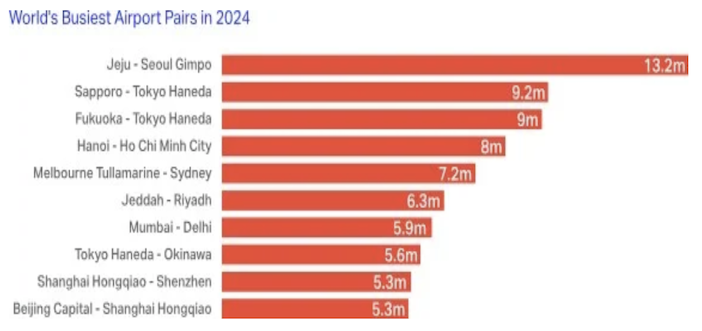
The most commonly operated aircraft
Narrowbody aircraft from Boeing and Airbus were among the aircraft most commonly used by airlines in 2024. Boeing 737 aircraft (including all variants) flew 10 million flights, with 2.4 trillion Available Seat Kilometres (ASKs) in 2024. The B737 was followed by the Airbus A320, with 7.9 million flights and 1.7 trillion ASKs, and the Airbus A321, with 3.4 million flights and 1.1 trillion ASKs.
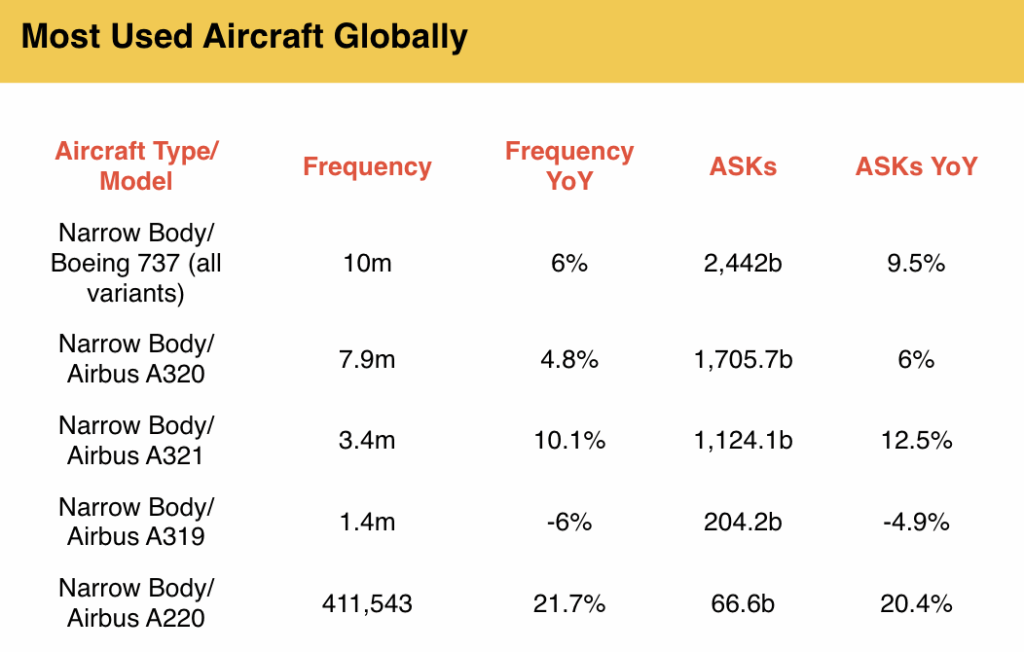
Where are the most passengers coming from?
The USA remains the world’s biggest aviation market (international and domestic passengers), with 876 million passengers in 2024 on the strength of its domestic market, growing 5.2% year-on-year. China was the second-biggest passenger market, with 741 million passengers – a growth of 18.7% compared to 2023.
